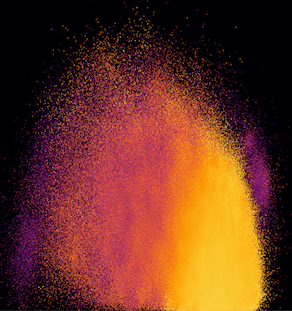Our group maintains several public datasets, described below. Click on the name of the dataset to find the publication with the details. Access options for each dataset are listed below its and image. Please cite the linked paper when using our public data. We love to know when you’re using our resources, and we’re happy to answer questions, so please drop us a line!
Synthetic Gaia DR2-like surveys of three simulated Milky-Way-mass galaxies from the FIRE suite. In each simulation we chose three different locations for the Sun. The full datamodel includes “Gaia-like” columns where the astrometry and photometry have been convolved with a simple error model, plus a whole lot of other information not in the real Gaia dataset!
Data Access: downloads at ytHub • Jupyter notebooks at Flatiron Binder • data browser and database query builder at Flathub
The simulations from which the above synthetic surveys were generated. These are part of a larger suite from the FIRE collaboration, of which our group are members. They follow the process of galaxy formation in Milky Way-mass dark matter halos in a fully cosmological context across their full 13.8 billion-year history, including the dark-matter + gaseous halo, stellar + gaseous disk, bulge, giant molecular clouds, star clusters, stellar halo, and satellites and dwarf galaxies.
Data access: FlatHub main public release page • annotated downloads at ytHub • Jupyter notebooks at Flatiron Binder • Potential models for MW-mass halos
Positions, velocities, metallicities of star “particles” in ~100 individual coherent tidal streams from disrupted satellite galaxies in the FIRE suite of Milky-Way-mass galaxy formation simulations. The infall, quenching, and disruption timescales for each stream (Panithanpaisal et al 2021), and low-order basis function expansion models fit to the host galaxy’s potential (Arora et al 2021, in prep) are also tabulated.
Data access: Data browser, query builder and downloads via FlatHub
All-sky mock catalogs with an APOGEE-like error model for abundances and radial velocities (Nikakhtar et al 2021), “crossmatched” to the original ananke synthetic surveys, plus 2MASS JHKs magnitudes for all stars in the synthetic surveys and a probability for each star entering the APOGEE selection function from Mackereth et al. 2017.
Data access: Released with SDSS DR17, as a Value-Added Catalog.
Coming soon

ananke-3:
Gaia DR3 on FIRE
An update to ananke for Gaia DR3, using the selection function and error models in Everall et al. 2021 where possible, and pygaia (Brown 2012) otherwise.



